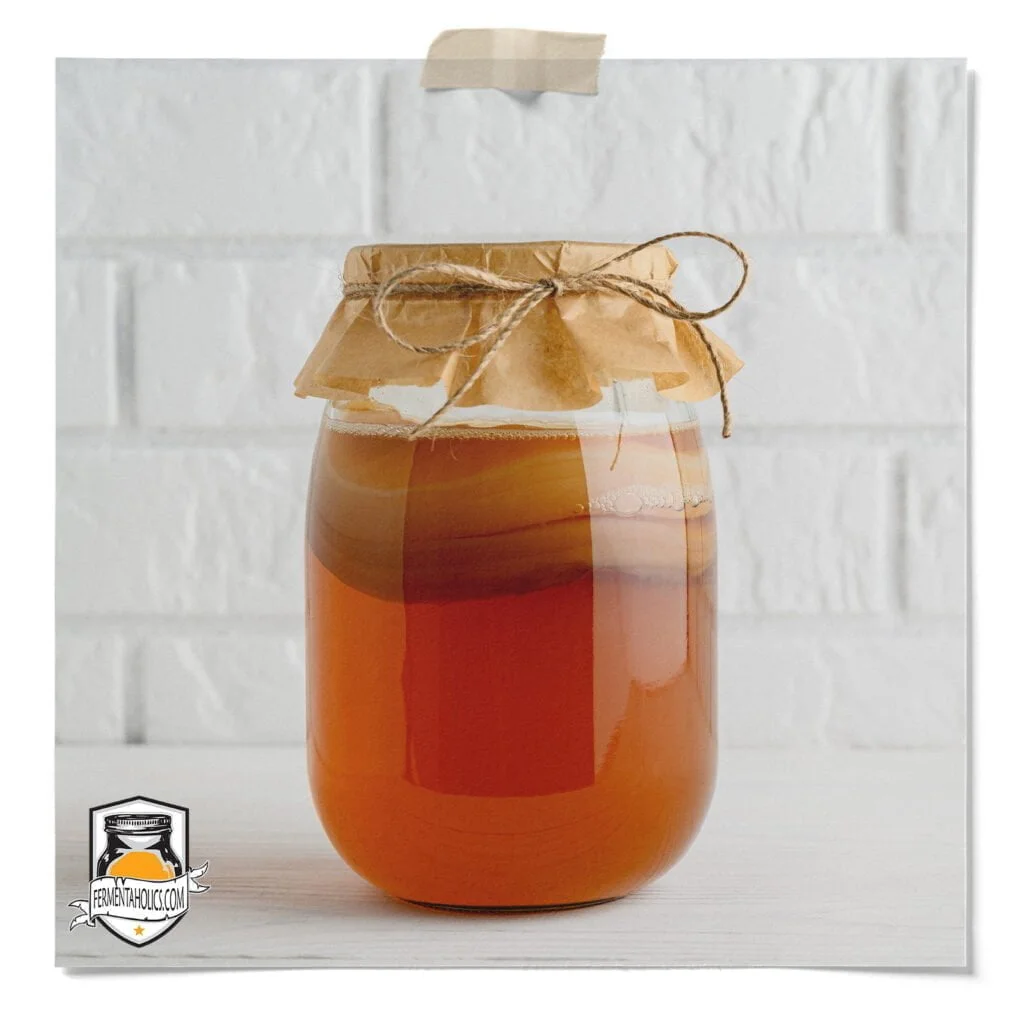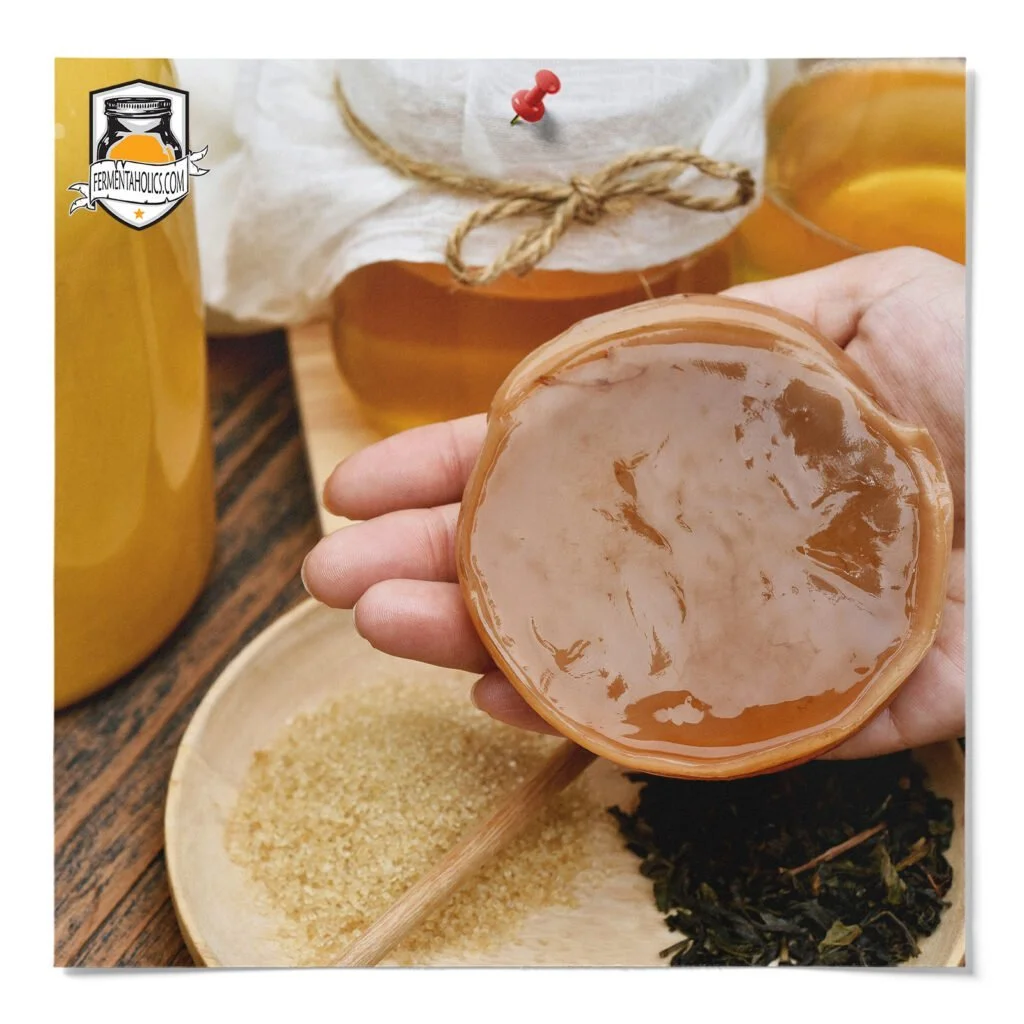
If you landed here you’ve recently started a batch of kombucha, and probably feeling a mix of excitement and anxiety. You’ve read all the blogs and watched all the videos, but it’s hard to know what to expect. There’s so much conflicting advice and opinions out there that it’s hard to tell what’s reliable and what’s not. Well, don’t worry, you’re in the right place. Today, we will break down the process and help you determine if your kombucha is fermenting. We’ll cover both the scientific method and the less reliable, more subjective stuff, like how it looks and smells. So, let’s dive in and uncover the secrets to monitoring your kombucha’s progress!

So you’ve brewed your tea, added your culture, found a spot for it to live… Now what? How do you know that it’s “working”?
Well, there are a few signs to watch for to get some peace of mind. Testing the pH and using your sense of sight, smell and taste should give you a good idea that your booch is well on its way. Let’s go over how you can do this.
When it comes to assessing the progress of kombucha fermentation, we typically rely on two types of tests: scientific and sensory. Scientific tests provide us with concrete, data-driven insights into what’s happening during fermentation, while sensory tests offer more of an approximation and are used when scientific tools are not readily available.
Among scientific tests, pH measurement is the gold standard for determining the fermenting status of your kombucha. On the sensory side, we have taste, smell, and visual indicators. However, it’s important to note that these sensory test are subjective and the indicators do vary significantly from person to person. What tastes sweet to one person might not be perceived as sweet to another, and the same goes for tartness and smell. The lack of standardized parameters makes these indicators much less reliable. While they can be helpful, it’s crucial to remember that when these tests yield ambiguous results, it doesn’t necessarily mean that fermentation has failed. Scientific testing remains the most accurate method, and subjective tests should be used as a fallback option when no other alternatives are available.
As discussed earlier, the most reliable indicator of a kombucha brew’s progress is the change or drop in pH. Monitoring the pH level is a straightforward and scientific approach to understanding how your kombucha fermentation is unfolding.
The kombucha fermentation process is a two-step process between yeast and bacteria, which is the ‘symbiosis’ part of the acronym SCOBY. First, yeast converts sugar into alcohol; then bacteria transform that alcohol into acids. These two steps result in a gradual increase in acidity, which can be precisely measured through pH testing. So, as kombucha ferments, more acids are produced, and your brew becomes more acidic. If you’ve tested the starting pH of your kombucha, then come back a week later, and the pH value has dropped, you know scientifically that fermentation is occurring regardless of what we see. It’s as simple as that.
To test your kombucha’s pH, you can use pH test strips designed for fermentation with an acid range of 0 to 6, such as those pictured above. Kombucha’s pH should stay within this range, so using these strips will provide accurate and easy-to-read results. If you have pH test strips for your aquarium or pool, they may work as long as they can read lower pH levels. Alternatively, you can use a pH meter for more precise readings, but you’ll need to calibrate it frequently, which can be a pain. So, for home brewing purposes, pH test strips are the most straightforward and most convenient option.
💡Want to dive a little deeper into pH and learn how to test it? Check out our post on kombucha pH Level.
When it comes to monitoring your kombucha by sense, remember that the presence or absence of specific indicators doesn’t mean fermentation is or isn’t happening. Temperature can impact the timing of these indicators, and all kombucha batches behave slightly differently. Instead, use these clues as a general gauge of fermentation progress. The absence of one or more indicators doesn’t necessarily mean that fermentation isn’t occurring – it may just mean that it’s not yet detectable. So don’t get too caught up in trying to check off every indicator on the list – instead, use them as a helpful guide to gauge your kombucha’s progress.

During kombucha fermentation, the yeast are often the first to reveal themselves. The way the yeast look when they clump together makes them commonly mistaken for mold with new brewers. If you see brown clumps or strings in your kombucha, don’t be alarmed. This is a normal part of the fermentation process called “yeast flocculation,” where the yeast cells clump together as a protective measure.
Yeast cells flocculate during fermentation as a means of protection from alcohol (for a visual, picture how fish school to protect themselves from predators). The flocculation provides a visible manifestation of what would otherwise be impossible to see with the naked eye! If there’s alcohol present, this means that fermentation is occurring, and you will notice brown clumps or strings of yeast throughout your brew. They can be anywhere in the jar–they might attach to the SCOBY like the photo above, or sink to the bottom, or hang out somewhere in the middle. More on yeast flocculation here!
Look for a thin, translucent film on the surface of the kombucha; this will be the new SCOBY or “pellicle.” This is a sign that the yeast and bacteria are doing their thing and fermenting the tea.

Some sediment may settle at the bottom of your kombucha jar, which is perfectly normal. This sediment comprises yeast and bacteria cells that have died or fallen out of suspension, and it’s a sign that fermentation is occurring.
Using your sense of smell can also help you determine if your kombucha is fermenting. Remove the cover and smell your brew to see if you detect any fruity or acidic aromas. A vinegar-like smell indicates that your kombucha is fermenting and is a result of the building acids that can be measured by pH testing. If you’re able to detect a pleasant, slightly sweet, and fruity aroma, this is a good sign that fermentation is progressing nicely.
Taste testing your kombucha can also provide clues about its fermentation status. Take a small sample and give it a taste. Look for a balance of sweetness and acidity with a slight tanginess. If it still tastes mostly sweet, it may need more time to ferment. If it’s too acidic or vinegary, it’s a sign that the fermentation process has gone too far for your preference and the kombucha has simply over-fermented.
As you’ve seen, there are various ways to gauge your kombucha’s fermentation progress. But if you want a reliable, scientific way to do it, pH testing is the way to go. So don’t stress yourself out trying to figure out if your kombucha is fermenting or not – grab a pH strip, do a quick test, and you’ll know for sure. With a precise answer in hand, you can go on with your day feeling confident and worry-free!

